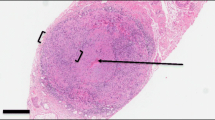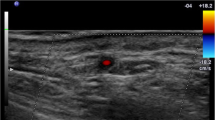Opinion statement
Patients with a suspected diagnosis of giant cell arteritis (GCA) should be started on high-dose corticosteroid therapy without delay. A temporal artery biopsy should be performed after initiation of therapy to confirm the diagnosis. Patients with acute visual or neurologic symptoms present a neuro-ophthalmic emergency. Therapy should be initiated immediately with high-dose intravenous methylprednisolone sodium succinate and followed by high-dose oral prednisone. Treatment may begin with highdose oral prednisone in patients without visual or neurologic symptoms. Calcium, vitamin D, and peptic ulcer prophylaxis should accompany steroid therapy, as indicated. The following treatments should be considered for patients with suspected GCA and acute visual or neurologic signs or symptoms: intravenous methylprednisolone sodium succinate (250 mg intravenously every 6 hours) should be given for 3 days, followed by oral prednisone (80 mg per day or 1 mg/kg) for 4 to 6 weeks. Prednisone should then be tapered by 10 mg per day every month. Most patients require 1 year of therapy to avoid relapse. Taper and duration should be modified according to erythrocyte sedimentation rate, C-reactive protein, and signs and symptoms of GCA. Rheumatologic consultation and follow-up is often helpful for these patients. For patients with suspected GCA and no acute visual or neurologic signs or symptoms, therapy may begin directly with oral prednisone (80 mg per day or 1 mg/kg) with same taper and duration based on laboratory values and clinical signs and symptoms.
Similar content being viewed by others
Explore related subjects
Discover the latest articles and news from researchers in related subjects, suggested using machine learning.References and Recommended Reading
Gonzalez-Gay MA, Garcia-Porrua C, Rivas MJ, et al.: Epidemiology of biopsy proven giant cell arteritis in northwestern Spain: trend over an 18-year period. Ann Rheum Dis 2001, 60:367–371.
Gonzalez-Gay MA, Garcia-Porrua C: Epidemiology of the vasculitides. Rheum Dis Clin North Am 2001, 27:729–749.
Levine SM, Hellmann DB: Giant cell arteritis. Curr Opin Rheumatol 2002, 14:3–10.
Hayreh SS: Risk factors in AION [letter]. Ophthalmology 2001, 108:1717–1718.
Hayreh SS: Acute ischemic disorders of the optic nerve: pathogenesis, clinical manifestations and management. Ophthalmol Clin North Am 1996, 9:407–442.
Hayreh SS: Steroid therapy for visual loss in patients with giant-cell arteritis. Lancet 2000, 355:1572–1573.
Hayreh SS, Podhajsky PA, Zimmerman B: Ocular manifestations of giant cell arteritis. Am J Ophthalmol 1998, 125:509–520.
Liu GT, Volpe NJ, Galetta SL: Neuro-ophthalmology: Diagnosis and Management. Philadelphia: WB Saunders Company; 2001.
Galetta SL, Balcer LJ, Liverman D, et al.: Refractory giant cell arteritis with spinal cord infarction. Neurology 1997, 49:1720–1723.
Jennings GH, Camb MB: Arteritis of the temporal vessels. Lancet 1938, 1:424–428.
Birkhead NC, Wagener HP, Shick RM: Treatment of temporal arteritis with adrenal corticosteroids. JAMA 1957, 163:821–827.
Liu GT, Glaser JS, Schatz NJ, et al.: Visual morbidity in giant cell arteritis: clinical characteristics and prognosis for vision. Ophthalmology 1994, 101:1779–1785.
Chan CC, Paine M, O’Day J: Steroid management in giant cell arteritis. Br J Ophthalmol 2001, 85:1061–1064. This Class III study including 73 patients with visual loss caused by GCA indicates that steroid treatment initiated with IV methylprednisolone may be more effective at improving vision than oral treatment alone. Twenty-one patients experienced visual improvement after steroid treatment. Of these, 17 had been treated with IV steroids initially and four had been treated with only oral steroids (P=0.01). The overall rate of visual improvement with steroids was 29% (mean visual improvement was 2 Snellen lines).
Faarvang KL, Thyssen EP: Giant cell arteritis: loss of vision during corticosteroid therapy. J Intern Med 1989, 225:215–216.
Cornblath WT, Eggenberger ER: Progressive visual loss from giant cell arteritis despite high-dose intravenous methylprednisolone. Ophthalmology 1997, 104:854–858.
Huston KA, Hunder GG, Lie JT, et al.: Temporal arteritis: a 25-year epidemiologic, clinical, and pathologic study. Ann Intern Med 1978, 88:162–167.
Font C, Cid MC, Coll-Vinent B, et al.: Clinical features in patients with permanent visual loss due to biopsy-proven giant cell arteritis. Br J Rheumatol 1997, 36:251–254.
Spiera R, Mitnick H, Kupersmith M, et al.: A prospective, double-blind, randomized, placebo controlled trial of methotrexate in the treatment of giant cell arteritis. Clin Exp Rheumatol 2001, 19:495–501. The addition of methotrexate to the GCA treatment regimen did not result in steroid-sparing, fewer steroid-related side effects, or increased effectiveness against GCA in this 21-patient study.
Hoffman GS, Cid MC, Hellmann DB, tet al.: A multicenter, randomized, double-blind, placebo-controlled trial of adjuvant methotrexate treatment for giant cell arteritis. Arthritis Rheum 2002, 46:1309–1318. In this Class I study, the addition of methotrexate to the steroid treatment regimen for GCA resulted in no benefit regarding disease control, decrease in cumulative steroid dose, or decrease in steroid-related side effects. Sixteen health centers participated in this 98-patient study.
Jover JA, Hernandez-Garcia C, Morado I, et al.: Combined treatment of giant-cell arteritis with methotrexate and prednisone. Ann Intern Med 2001, 134:106–114. In this Class I study, the addition of methotrexate to the GCA steroid treatment regimen resulted in fewer GCA relapses, and a decreased cumulative steroid dose. However there was no concomitant decrease in steroid-related side effects in this study of 42 patients.
Cantini F, Niccoli L, Salvarani C, et al.: Treatment of longstanding active giant cell arteritis with infliximab: report of four cases. Arthritis Rheum 2001, 44:2933–2935.
Airo P, Antonioli CM, Vianelli M, et al.: Anti-tumor necrosis factor treatment with infliximab in a case of giant cell arteritis resistant to steroid and immunosuppressive drugs. Rheumatology 2002, 41:347–349.
Weyand CM, Kaiser M, Yang H, et al.: Therapeutic effects of acetylsalicylic acid in giant cell arteritis. Arthritis Rheum 2002, 46:457–466. Using mice implanted with diseased (GCA) human temporal artery tissue, these authors found that aspirin effectively inhibits a pathway important to the pathogenesis of GCA. This pathway is not well inhibited by steroids.
Weyand CM, Tetzlaff N, Bjornsson J, et al.: Disease patterns and tissue cytokine profiles in giant cell arteritis. Arthritis Rheum 1997, 40:19–26.
Postel EA, Pollock SC: Recovery of vision in a 47-yearold man with fulminant giant cell arteritis. J Clin Neuroophthalmol 1993, 13:262–270.
Model EG: Reversal of blindness in temporal arteritis with methylprednisolone [letter]. Lancet 1978, 1:340.
Rosenfeld SI, Kosmorsky GS, Klingele TG, et al.: Treatment of temporal arteritis with ocular involvement. Am J Med 1986, 80:143–145.
Hayreh SS, Zimmerman B, Kardon R: Visual improvement with corticosteroid therapy in giant cell arteritis: report of a large study and review of literature. Acta Ophthalmol Scand 2002, 80:355–367. In this study of 84 patients and 114 eyes, 4% of eyes experienced visual improvement with steroid treatment according to the more rigorous of the authors’ criteria for visual improvement. No advantage was seen with an initial IV pulse of methylprednisolone. Prompt treatment was the only significant predictor for visual improvement. An exhaustive literature review and critique is included, with explanations offered for higher rates of visual improvement previously reported in the literature.
Gonzalez-Gay MA, Blanco R, Rodriguez-Valverde V, et al.: Permanent visual loss and cerebrovascular accidents in giant cell arteritis. Arthritis Rheum 1998, 41:1497–1504.
Lee AG: Giant cell arteritis and intravenous methylprednisolone [letter]. Ophthalmology 1998, 105:203.
Gordon LK, Levin LA: Visual loss in giant cell arteritis. JAMA 1998, 280:385–386.
Hall ED: Neuroprotective actions of glucocorticoid and nonglucocorticoid steroids in acute neuronal injury. Cell Mol Neurobiol 1993, 13:415–432.
Physicians Desk Reference. Montvale, NJ: Medical Economics Co., Inc.; 2003.
Kupersmith MJ, Langer R, Mitnick H, et al.: Visual performance in giant cell arteritis (temporal arteritis) after 1 year of therapy. Br J Ophthalmol 1999, 83:796–801.
Matzkin DC, Slamovits TL, Sachs R, Burde RM: Visual recovery in two patients after intravenous methylprednisolone treatment of central retinal artery occlusion secondary to giant-cell arteritis. Ophthalmology 1992, 99:68–71.
Robb-Nicholson C, Chang RW, Anderson S, et al.: Diagnostic value of the history and examination in giant cell arteritis: a clinical pathological study of 81 temporal artery biopsies. J Rheumatol 1988, 15:1793–1796.
Miller PD: Bisphosphonates for the prevention and treatment of corticosteroid-induced osteoporosis. Osteoporos Int 2001, 3(suppl):3–10.
Ray-Chaudhuri N, Kine DA, Tijani SO, et al.: Effect of prior steroid treatment on temporal artery biopsy findings in giant cell arteritis. Br J Ophthalmol 2002, 86:530–532.
Drug Topics Redbook. Montvale NJ: Medical Economics Co., Inc.; 2002.
Pless M, Rizzo JF, Lamkin JC, Lessell S: Concordance of bilateral temporal artery biopsy in giant cell arteritis. J Neuroophthalmol 2000, 20:216–218.
Danesh-Meyer HV, Savino PJ, Eagle RC, et al.: Low diagnostic yield with second biopsies in suspected giant cell arteritis. J Neuroophthalmol 2000, 20:213–215.
Hall JK, Volpe NJ, Galetta S, et al.: The role of unilateral temporal artery biopsy. Ophthalmology 2003, 110:543–548.
Hayreh SS, Podhajsky PA, Raman R, Zimmerman B: Giant cell arteritis: validity and reliability of various diagnostic criteria. Am J Ophthalmol 1997, 123:285–296.
Ernst BB, Lowder CY, Meisler DM, Gutman FA: Posterior segment manifestations of inflammatory bowel disease. Ophthalmology 1991, 98:1272–1280.
Sedwick LA, Klingele TG, Burde RM, Behrens MM: Optic neuritis in inflammatory bowel disease. J Clin Neuroophthalmol 1984, 4:3–6.
Galetta SL, Balcer LJ, Liu GT: Giant cell arteritis with unusual flow-related neuro-ophthalmologic manifestations. Neurology 1997, 49:1463–1465.
Cacoub P, Chemlal K, Khalifa P, et al.: Deflazacort versus prednisone in patients with giant cell arteritis: effects on bone mass loss. J Rheumatol 2001, 28:2474–2479.
Weyand CM, Fulbright JW, Hunder GG, et al.: Treatment of giant cell arteritis: interleukin-6 as a biologic marker of disease activity. Arthritis Rheum 2000, 43:1041–1048.
Dave SB, Goldin S, Wall M, et al.: Retrobulbar optic neuritis induced by anti-TNF-a agent, infliximab, and recurrence following rechallenge. Paper presented at the 29th Annual North American Neuro-ophthalmology Society Meeting. Salt Lake City, UT; February 8–13, 2003.
Mejico LJ: Infliximab-associated retrobulbar optic neuritis. Poster presented at the 29th Annual North American Neuro-ophthalmology Society Meeting. Salt Lake City, UT; February 8–13, 2003.
Author information
Authors and Affiliations
Rights and permissions
About this article
Cite this article
Hall, J.K., Balcer, L.J. Giant cell arteritis. Curr Treat Options Neurol 6, 45–53 (2004). https://doi.org/10.1007/s11940-004-0038-z
Issue Date:
DOI: https://doi.org/10.1007/s11940-004-0038-z




